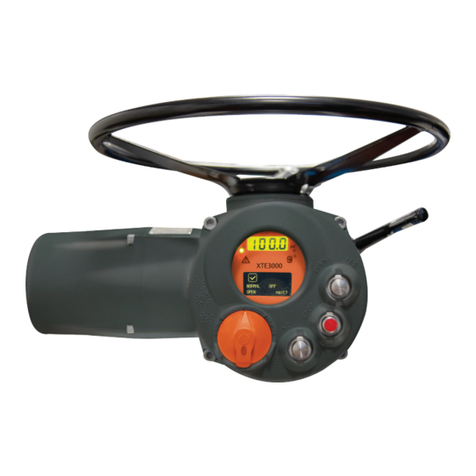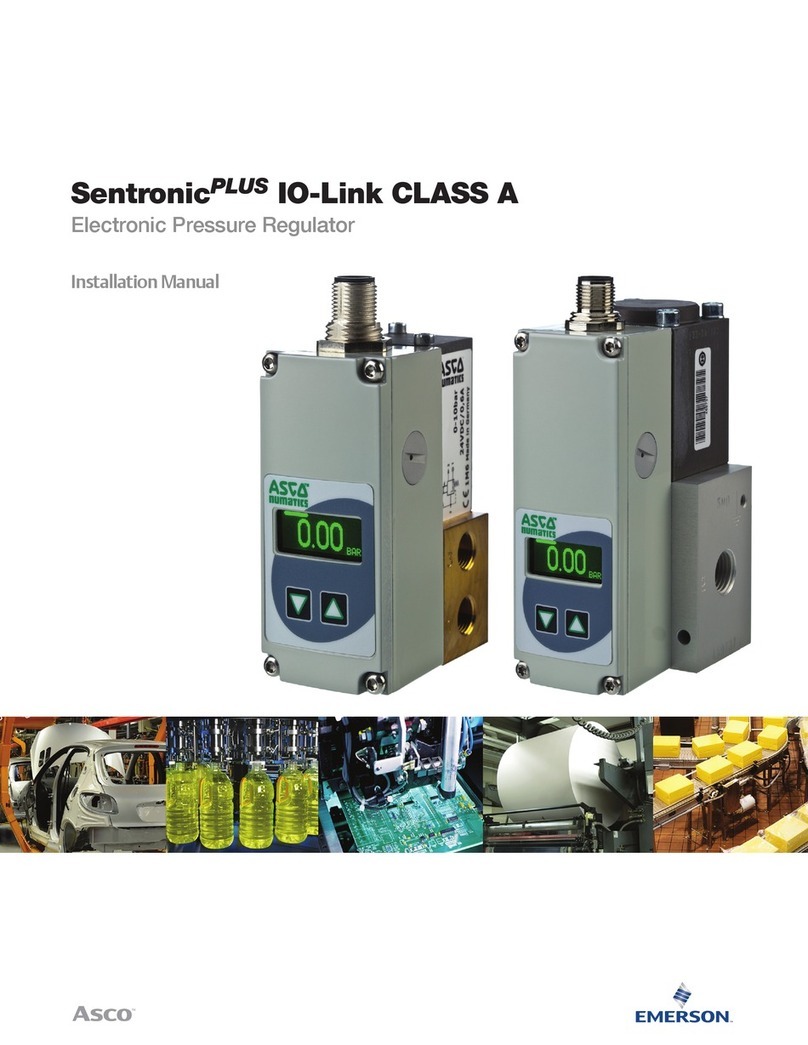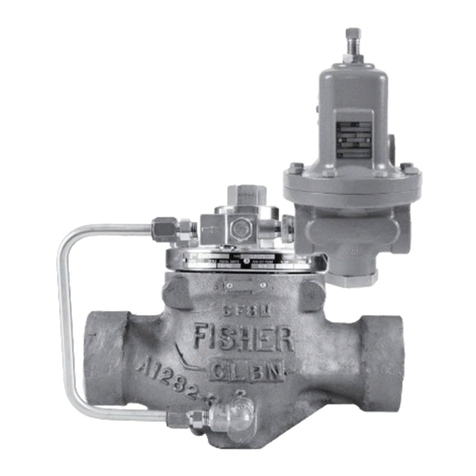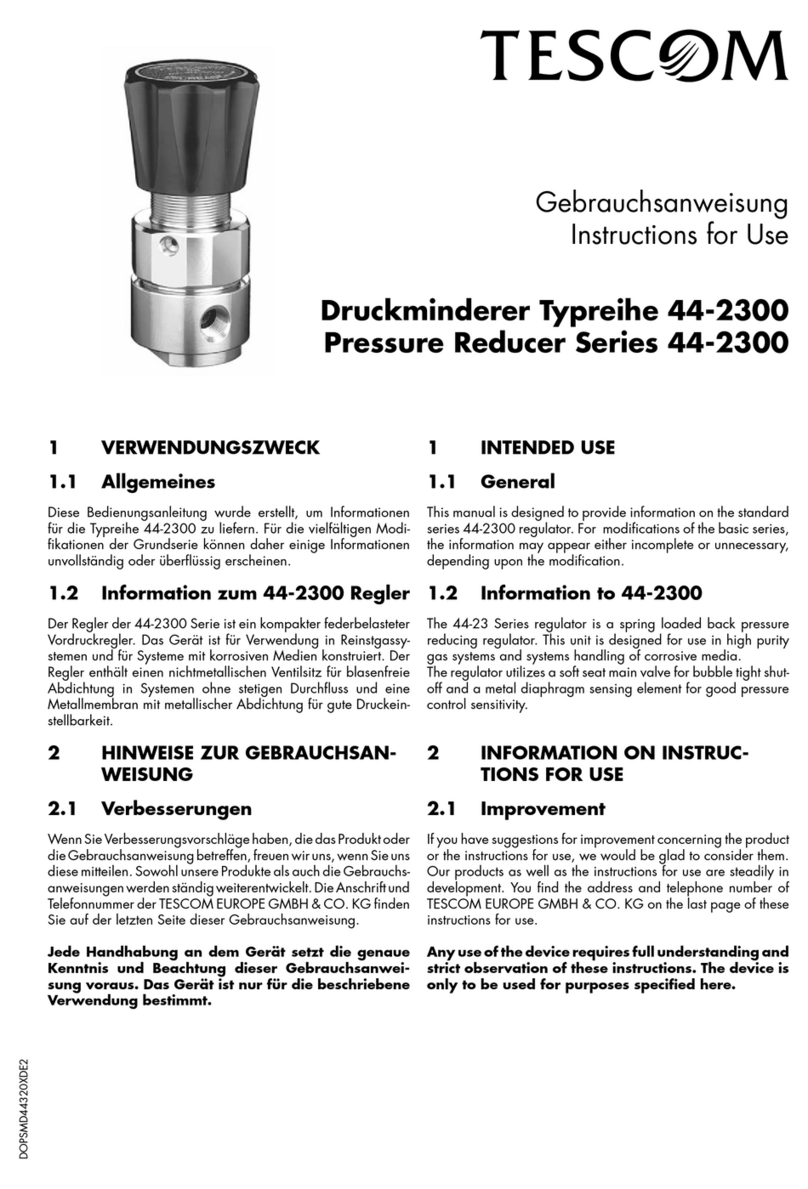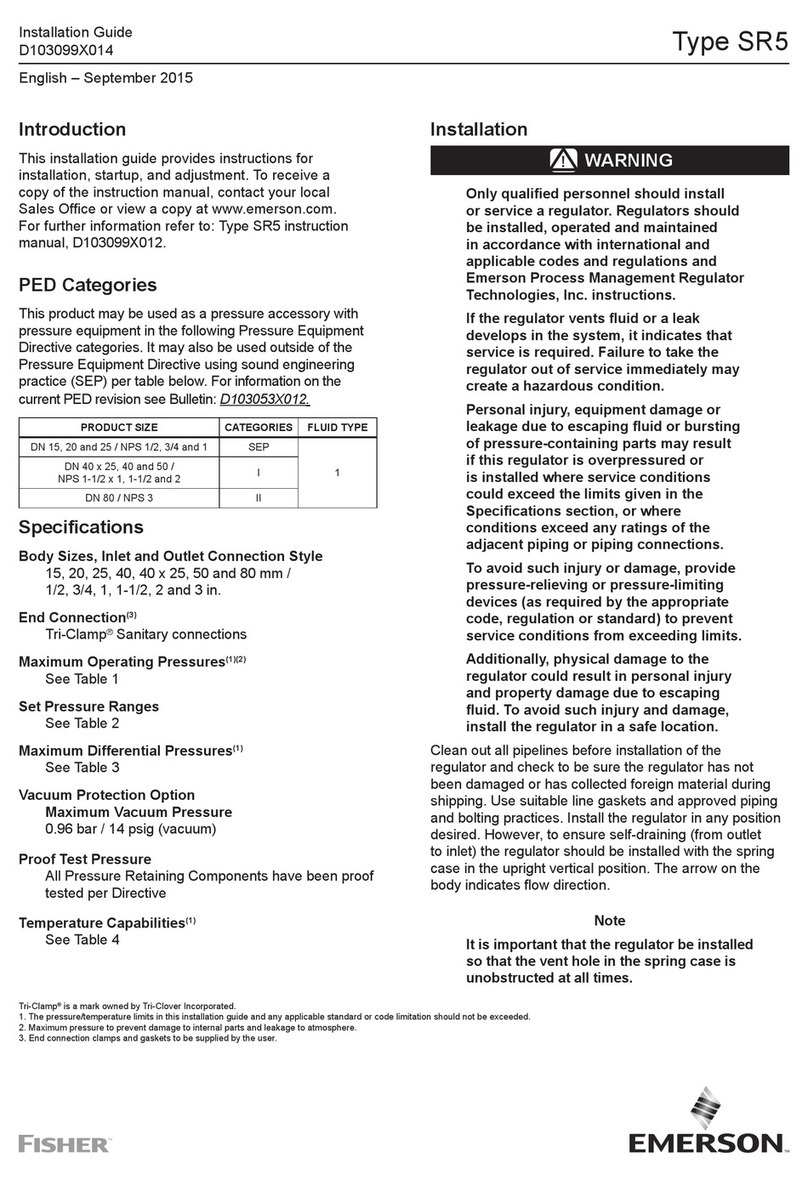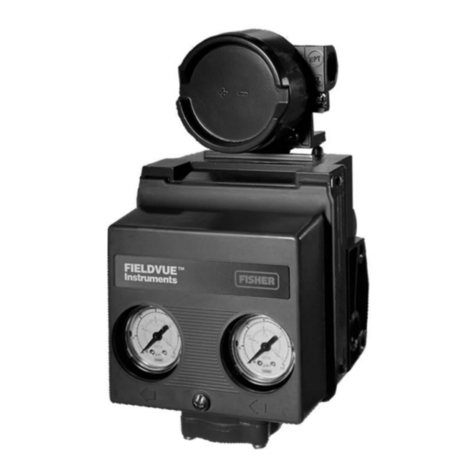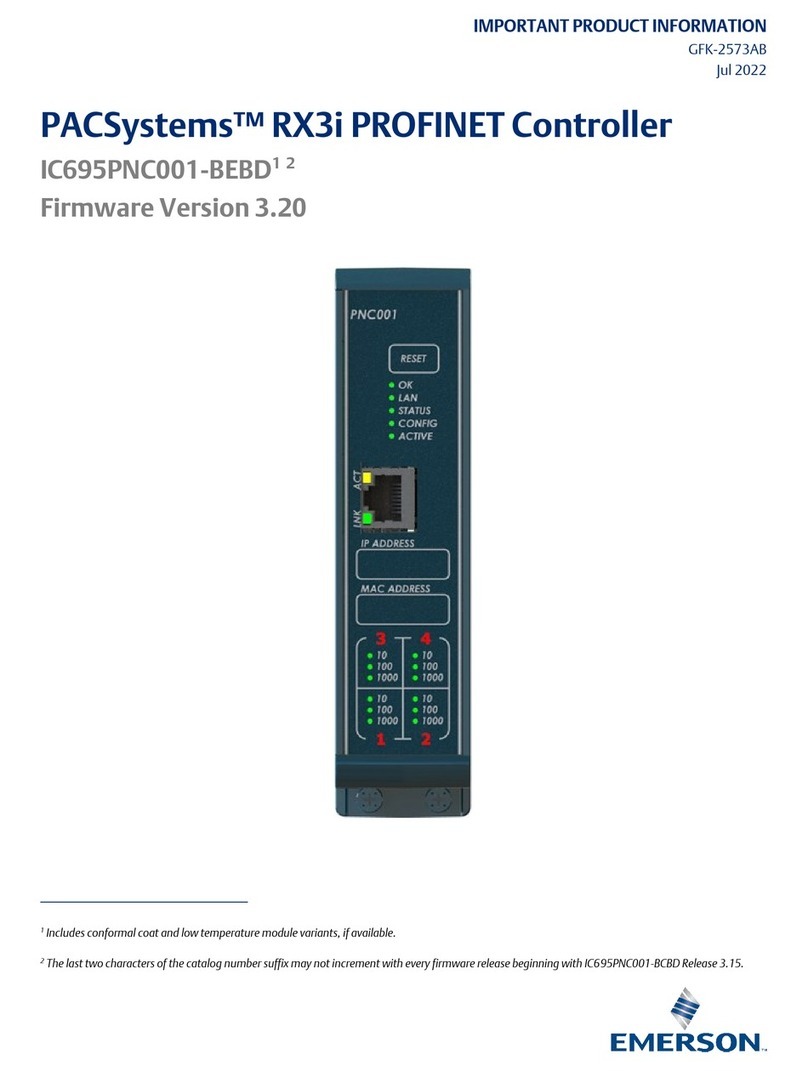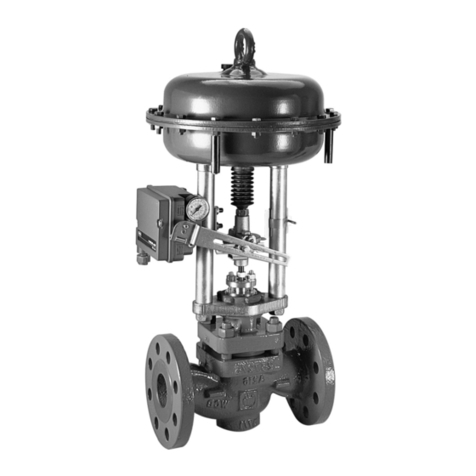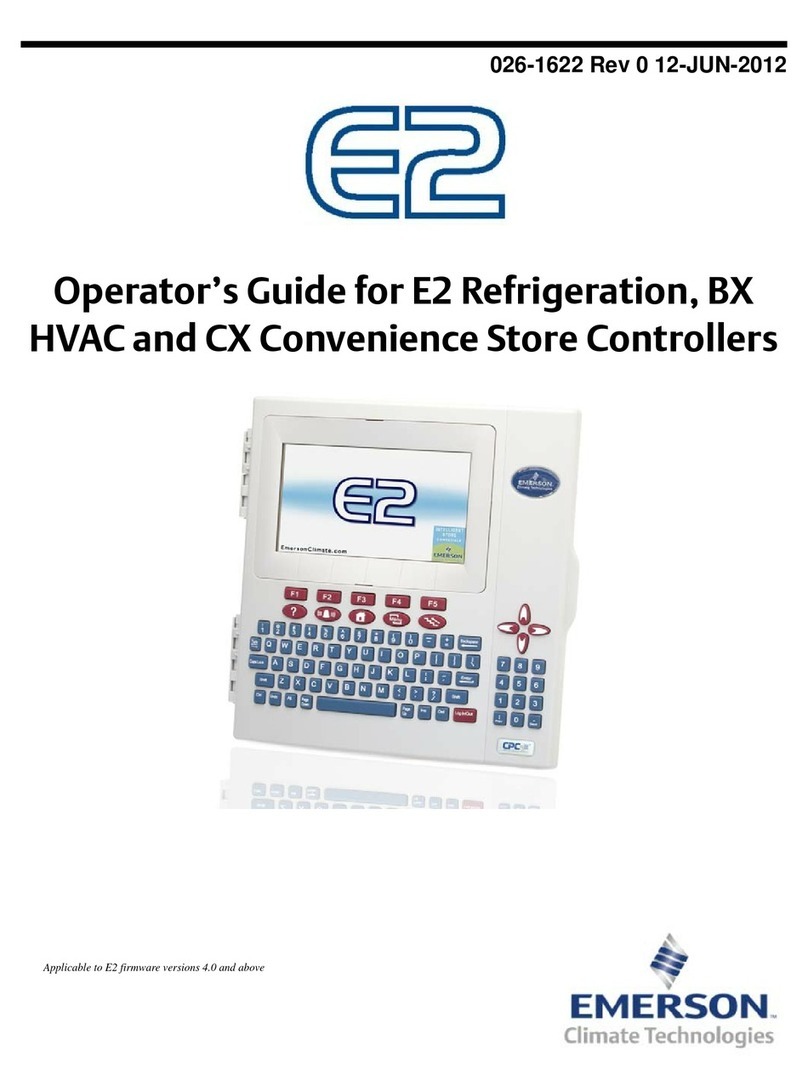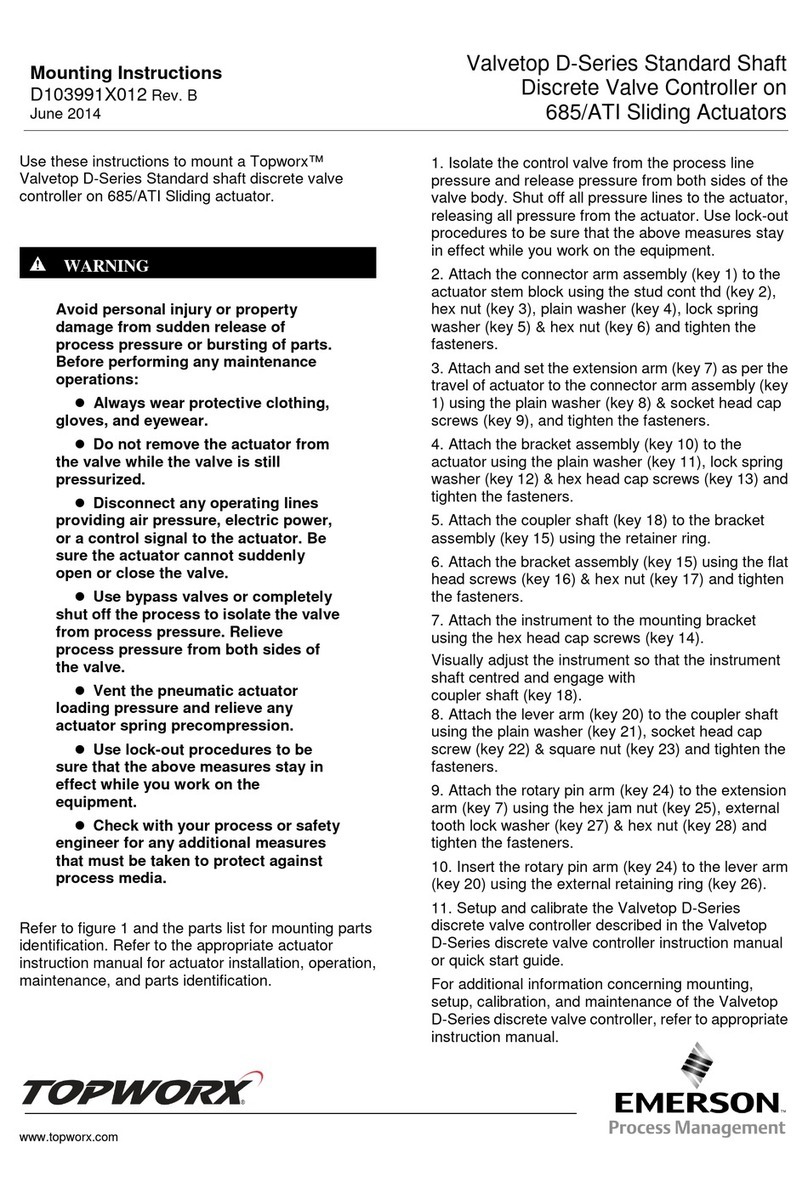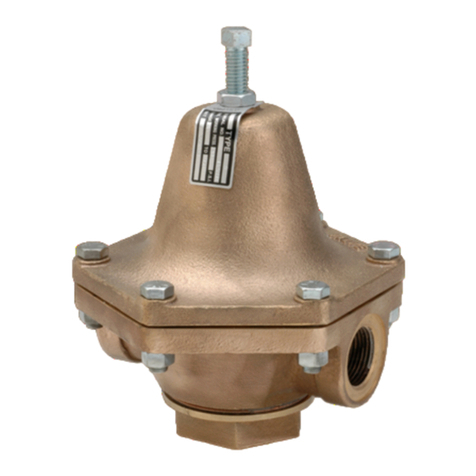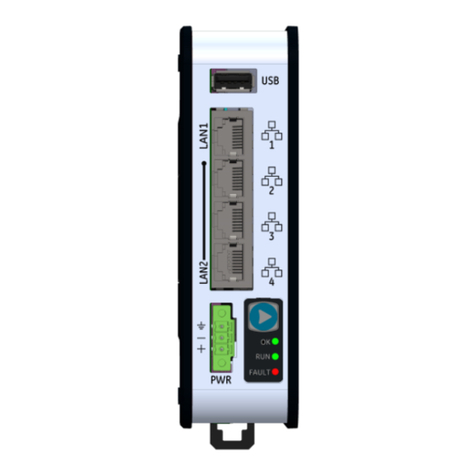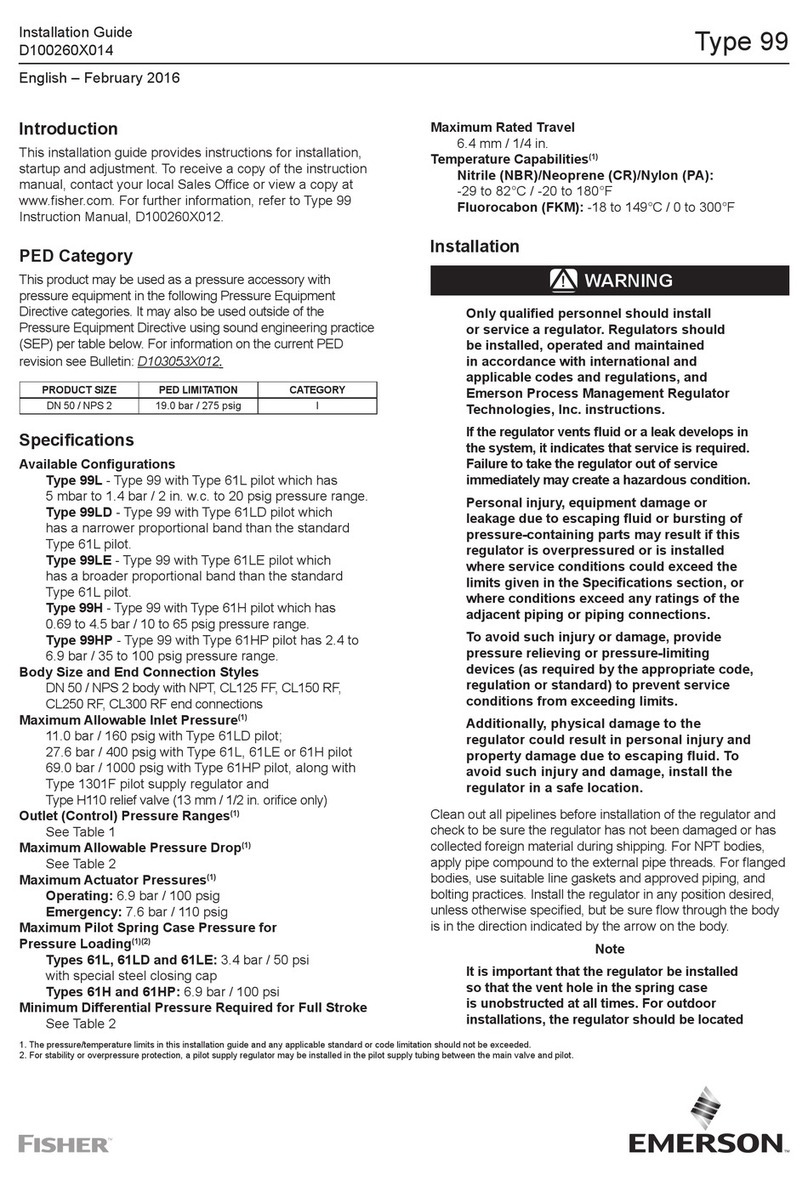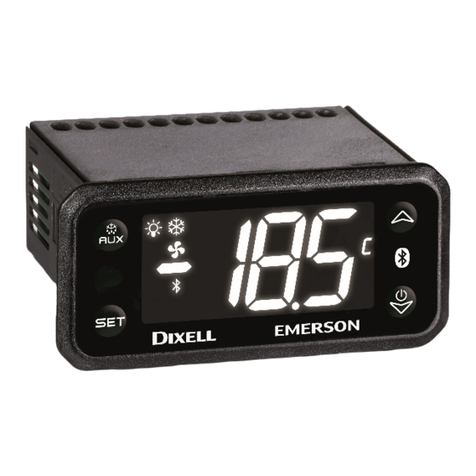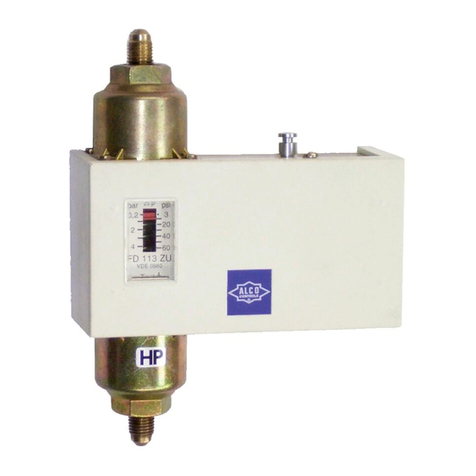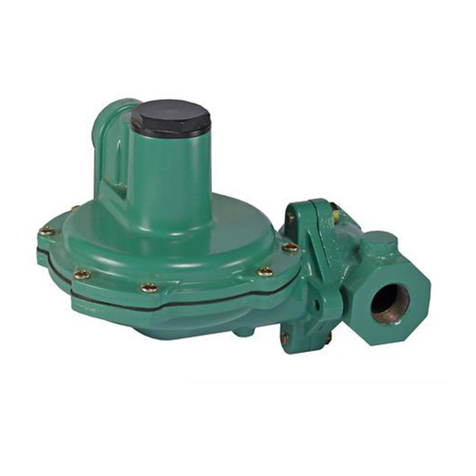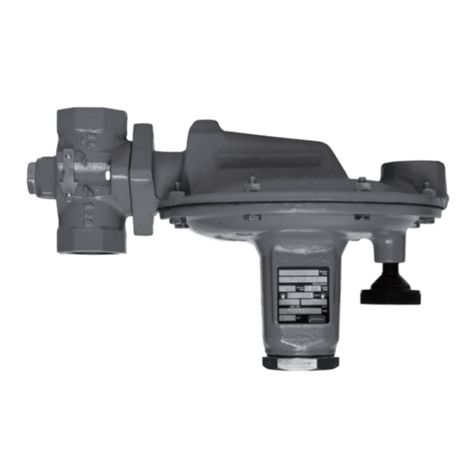
1598024001 XR44CX ISA GB r1.0 26.01.2007 XR44CX 2/3
6.5.2 HOW TO MOVE A PARAMETER FROM THE HIDDEN MENU TO THE
FIRST LEVEL AND VICEVERSA.
Each parameter present in the HIDDEN MENU can be removed or put into “THE FIRST LEVEL”(user
level) by pressing “SET + n”.
In HIDDEN MENU when a parameter is present in First Levelthe decimal point is on.
6.6 HOW TO LOCK THE KEYBOARD
1. Keep pressed for more than 3 s the UP + DOWN keys.
2. The “POF” message will be displayed and the keyboard will be locked. At this point it will be
possible only to see the set point or the MAX o Min temperature stored
3. If a key is pressed more than 3s the “POF” message willbe displayed.
6.7 TO UNLOCK THE KEYBOARD
Keep pressed together for more than 3s the o and nkeys, till the “Pon” message will be
displayed.
6.8 THE CONTINUOUS CYCLE
When defrost is not in progress, it can be activated by holding the “o” key pressed for about 3
seconds. The compressor operates to maintain the “ccS” set point for the time set through the “CCt”
parameter. The cycle can be terminated before the end of the set time using the same activation key
“o”for 3 seconds.
6.9 THE ON/OFF FUNCTION
With “onF = oFF”, pushing the ON/OFF key, the instrument is switched off. The “OFF”
message is displayed. In this configuration, the regulation is disabled.
To switch the instrument on, push again the ON/OFF key.
WARNING: Loads connected to the normally closed contacts of the relays are always
supplied and under voltage, even if the instrument is in stand by mode.
7. PARAMETERS
REGULATION
Hy Differential: (0,1 ÷ 25,5°C / 1÷255°F) Intervention differentialfor set point. Compressor Cut IN is
Set Point + differential (Hy). Compressor Cut OUT is when the temperature reaches the set
point.
LS Minimum set point: (- 50°C÷SET/-58°F÷SET): Sets the minimum value for the set point.
US Maximum set point: (SET÷110°C/ SET÷230°F). Set the maximum valuefor set point.
Ot Thermostat probe calibration: (-12.0÷12.0°C; -120÷120°F) allows to adjust possible offset of
the thermostat probe.
P2P Evaporator probe presence: n= not present: the defrost stops bytime; y= present: the defrost
stops by temperature.
OE Evaporator probe calibration: (-12.0÷12.0°C; -120÷120°F). allows to adjust possible offset of
the evaporator probe.
P3P Second evaporator probe presence (P3): n= not present:, the terminal operates as digital
input.; y= present:, the terminaloperates as third probe.
O3 Second evaporator probe calibration (P3): (-12.0÷12.0°C; -120÷120°F). allows to adjust
possible offset of the third probe.
odS Outputs activation delay at start up: (0÷255min) This function is enabled at the initialstart up
of the instrument and inhibits any output activation for the period of time set in the parameter.
AC Anti-short cycle delay: (0÷50 min) minimum interval between the compressor stop and the
following restart.
AC1 2nd compressor delay at start up (0÷255s) Time intervalbetween the switching on of the first
compressor and the second one.
CCt Compressor ON time during continuous cycle: (0.0÷24.0h; res. 10min) Allows to set the
length of the continuous cycle: compressor stays on without interruption for the CCt time. Can be
used, for instance, when the room is filled with new products.
CCS Set point for continuous cycle: (-50÷150°C) it sets the set point used during the continuous
cycle.
COn Compressor ON time with faulty probe: (0÷255 min) time during which the compressor is
active in case of faultythermostat probe. With COn=0 compressor is always OFF.
COF Compressor OFF time with faulty probe: (0÷255 min) time during which the compressor is
OFF in case of faultythermostat probe. With COF=0 compressor is always active.
DISPLAY
CF Temperature measurement unit: °C=Celsius; °F=Fahrenheit. WARNING: When the
measurement unit is changed the SET point and the values of the parameters Hy, LS, US, Ot,
ALU and ALL have to be checked and modified if necessary).
rES Resolution (for °C): (in = 1°C; dE = 0.1 °C) allows decimalpoint display.
Lod Instrument display: (P1; P2, SET, dtr): it selects which probe is displayed by the instrument:
P1 = Thermostat probe; P2 = Evaporator probe; SET = set point; dtr = not set it.
DEFROST
tdF Defrost type: EL = electricalheater; in = hot gas
dtE First defrost termination temperature: (-50÷50 °C/ -58÷122°F) Enabled only when P2P=y. It
sets the temperature measured by the evaporator probe, which causes the end of defrost.
dtS Second termination temperature: (-50÷50 °C/ -58÷122°F) Enabled only when P3P=y. It sets
the temperature measured by the second evaporator probe, which causes the end of defrost.
IdF Interval between defrost cycles: (0÷120h) Determines the time interval between the
beginning of two defrost cycles.
MdF (Maximum) length for first defrost: (0÷255min) When P2P = n, (not evaporator probe: timed
defrost) it sets the defrost duration, when P2P = y (defrost end based on temperature) it sets
the maximum length for defrost.
MdS (Maximum) length for second defrost: (0÷255min) When P3P = n, (not evaporator probe:
timed defrost) it sets the defrost duration, when P3P = y (defrost end based ontemperature) it
sets the maximum length for defrost.
dSd Start defrost delay: ( 0÷99min) This is useful when different defrost start times are necessary
to avoid overloading the plant.
dFd Temperature displayed during defrost: (rt = real temperature; it = temperature at defrost
start; SEt = set point; dEF = “dEF”label)
dAd MAX display delay after defrost: (0÷255min). Sets the maximum time between the end of
defrost and the restarting of the realroom temperature display.
Fdt Drip time: (0120 min) time interval between reaching defrost termination temperature and the
restoring of the control’s normal operation. This time allows the evaporator to eliminate water
drops that might have formed due to defrost.
dPo First defrost after start-up: (y = immediately; n = after the IdF time)
dAF Defrost delay after continuous cycle: (023.5h) time interval between the end of the fast
freezing cycle and the following defrost related to it.
ALARMS
ALC Temperature alarms configuration: (Ab; rE)
Ab= absolute temperature: alarm temperature is given by the ALL or ALU values. rE =
temperature alarms are referred to the set point. Temperature alarm is enabled when the
temperature exceeds the “SET+ALU” or “SET-ALL” values.
ALU MAXIMUM temperature alarm: (SET÷110°C; SET÷230°F) when this temperature is reached
the alarm is enabled, after the “ALd” delay time.
ALL Minimum temperature alarm: (-50.0 ÷ SET°C; -58÷230°F when this temperature is reached
the alarm is enabled, after the “ALd” delay time.
AFH Differential for temperature alarm/ fan recovery: (0,1÷25,5°C; 1÷45°F) Intervention
differential for recovery of temperature alarm. It’s also used for the restart of the fan when the
FSt temperature is reached
ALd Temperature alarm delay: (0÷255 min) time interval between the detection of an alarm
condition and alarm signalling.
dAO Exclusion of temperature alarm at startup: (from 0.0 min to 23.5h) time interval betweenthe
detection of the temperature alarm condition after instrument power on and alarm signalling.
OTHER
Adr Serial address (0÷244): Identifies the instrument address when connected to a ModBUS
compatible monitoring system.
PbC Type of probe: it allows to set the kind of probe used by the instrument: PbC = PBC probe, ntc
= NTC probe.
dP1 Thermostat probe display
dP2 Evaporator 1 probe display
dP3 Evaporator 2 probe display
rSE Real set point: it shows the set point used during the energy saving cycle or during the
continuous cycle.
rEL Software release for internaluse.
Ptb Parameter table code: readable only.
8. INSTALLATION AND MOUNTING
Instrument XR44CX shall be mounted on vertical panel, in a 29x71
mm hole, and fixed using the specialbracket supplied.
The temperature range allowed for correct operation is 060 °C.
Avoid places subject to strong vibrations, corrosive gases,
excessive dirt or humidity. The same recommendations apply to
probes. Let air circulate by the cooling holes.
9. ELECTRICAL CONNECTIONS
The instrument is provided with screw terminal block to connect cables with a cross section up to 2,5
mm2. Before connecting cables make sure the power supply complies with the instrument’s
requirements. Separate the probe cables from the power supply cables, from the outputs and the
power connections. Do not exceed the maximum current allowed on each relay, in case of heavier
loads use a suitable external relay.
9.1 PROBE CONNECTION
The probes shall be mounted with the bulb upwards to prevent damages due to casual liquid
infiltration. It is recommended to place the thermostat probe away from air streams to correctly
measure the average room temperature. Place the defrost termination probe among the evaporator
fins in the coldest place, where most ice is formed, far from heaters or from the warmest place during
defrost, to prevent premature defrost termination.
10. HOW TO USE THE HOT KEY
10.1 HOW TO PROGRAM A HOT KEY FROM THE INSTRUMENT (UPLOAD)
1. Program one controller with the front keypad.
2. When the controller is ON, insert the “Hot key” and push okey; the "uPL" message
appears followed a by flashing “End”
3. Push “SET” key and the End will stop flashing.
4. Turn OFF the instrument remove the “Hot Key”, then turn it ON again.
NOTE: the “Err” message is displayed for failed programming. In this case push again okey if you
want to restart the upload again or remove the “Hot key”to abort the operation.
10.2 HOW TO PROGRAM AN INSTRUMENT USING A HOT KEY
(DOWNLOAD)
1. Turn OFF the instrument.
2. Insert a programmed “Hot Key” into the 5 PIN receptacle and then turn the Controller ON.
3. Automatically the parameter list of the “Hot Key” is downloaded into the Controller memory,
the “doL”message is blinking followed a by flashing “End”.
4. After 10 seconds the instrument willrestart working with the new parameters.
5. Remove the “Hot Key”..
NOTE the message “Err” is displayed for failed programming. In this case turn the unit off and then
on if you want to restart the download again or remove the “Hot key” to abort the operation.
11. ALARM SIGNALS
Message
Cause Outputs
“P1” Room probe failure Compressor output acc. to par. “Con” and “COF”
“P2” Evaporator probe failure Defrost end is timed
“HA” Maximum temperature alarm Outputs unchanged.
“LA” Minimum temperature alarm Outputs unchanged.
“dA” Door open Compressor and fans restarts
“EA” External alarm Output unchanged.
“CA” Serious externalalarm (i1F=bAL) Alloutputs OFF.
“PAL” Pressure switch alarm (i1F=PAL) All outputs OFF
